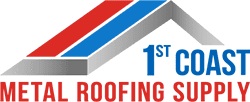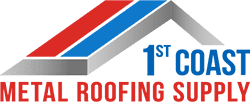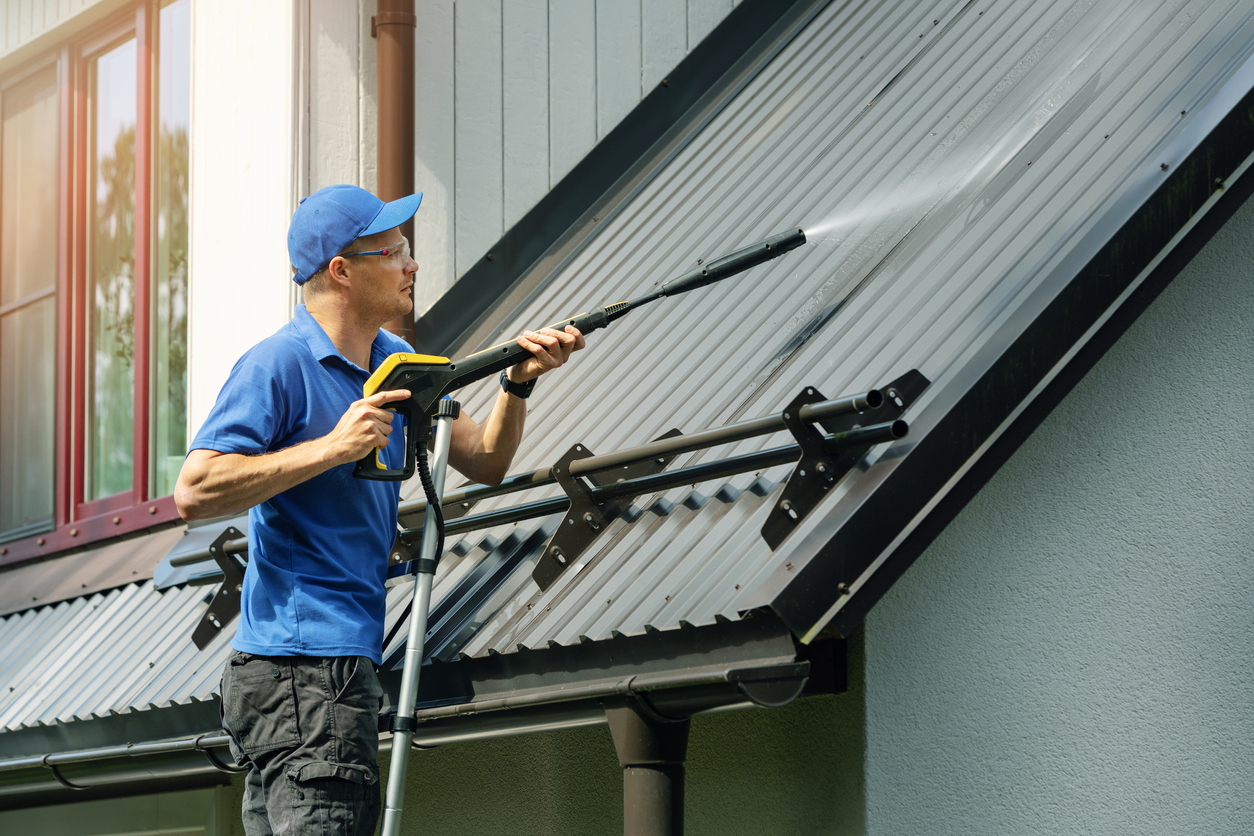Metal roofs are one of the most durable, long-lasting, sustainable roofing materials out there. Compared to asphalt shingles, metal roofs can last up to twice as long, and they also reflect heat more efficiently, helping to reduce energy bills throughout the year. Another perk? Metal roofs are low-maintenance, meaning you won’t have to spend a lot of time fixing loose shingles or raking snow off the roof.
But still, you do need to take care of your metal roof with occasional roof cleaning. We’ve compiled this beginner’s guide to introduce options for metal roofing cleaning supplies and teach you everything you need to know about metal roof maintenance.
What Are the Right Cleaners for Metal Roofs?
Before you head up to the roof with your cleaning supplies in hand, take note: Some cleaning agents can damage your metal roof and even void the warranty. So take care to choose a cleaner that is safe, effective, and included in your metal roof warranty.
So what is the right metal roof cleaner? In collaboration with Watts Removal, Sherwin-Williams offers metal roof maintenance and cleaning supplies that are safe to use on metal roofs—and most importantly—won’t void your warranty.
All Watts Removal products can be used on Sherwin-Williams coil and extrusion coated metal roofs and buildings of any age. These environmentally friendly cleaning agents can take care of oxidation, chalking, rust stains, tiger-striping, mildew, and more.
How Do You Wash a Metal Roof?
Washing your metal roof will remove dirt, grime, and other buildup that could cause corrosion or mildew if left untreated for an extended period of time. Not only will your freshly cleaned metal roof look better—it will last longer, too.
Here’s how to clean a painted metal roof:
- Gather your supplies. You’ll need a washcloth or sponge, a soft bristle brush, and your Watts Removal metal roof cleaner.
- Remove dirt and debris. Sweep, wipe, or rinse off any loose dirt, leaves, or other debris to prepare your roof for cleaning.
- Clean the roof. Dip your cloth or sponge into the cleaning agent and gently rub along the surface of the metal roof, one section at a time.
- Spot treat stubborn stains. If you notice sections of the roof with mildew or rust, it’s time to spot treat these areas using the soft bristle brush and cleaning agent. You may need to let the area soak in the cleaner for an extended period before scrubbing clean.
- Rinse with water. Once the roof is clean, it’s time to rinse the roof with water, either using a hose or bucket.
Is It Okay to Pressure Wash a Metal Roof?
While you could pressure wash a metal roof with very light pressure, we recommend staying away from this option. High-pressure washing, or putting the power washer too close to the metal roof, could cause dents or other damage to the rooftop. Instead, you can use a cleaning solution and plain water.
How Do You Remove Oxidation from a Metal Roof?
A small amount of oxidation will not harm a roof, but if you want your metal roof to have a fresh look (or if the oxidation has gotten worse), then you can clean it using Watts Removal cleaner, a washcloth, and water.
As with any other type of metal roof cleaning, make sure to use soft cloths and brushes. Always test the cleaning agent on a small area before applying it to a large section of the roof.
How Often Should You Clean a Metal Roof?
Fortunately, metal roofs do not require deep cleaning very often. In fact, you probably don’t even need to do it every year. Most metal roofs can go 2-3 years before they need to be cleaned—but remember that conditions vary depending on the climate, type of metal roof coating, and location of the home.
Do a quick check of your roof a few times a year to determine if and when you might need to perform some metal roof maintenance. By keeping your roof clean and free of debris, you’ll prolong the life of your metal roof and save money in the long run.
Tips for Cleaning Your Metal Roof
Climbing onto the roof to clean or make repairs can be risky. Play it safe by following the proper precautions and adhering to these expert tips:
- Watch the weather. It can be dangerous to climb on the roof in wet or extreme weather. Avoid extreme heat or cold, rain, or snow, and wait to clean the roof on a cloudy, dry day. Bright sunshine could create a glare that makes it difficult to see on the roof, and rain could cause you to slip and fall.
- Stick to the ladder. Though you may be tempted to climb all over the roof to clean, you may be able to cover the majority of the rooftop by sticking to a ladder on the side of the house. Use a hose or soft bristle broom to extend your reach.
- Trim branches. Notice leaves and sticks piling up on your roof? Minimize the problem by trimming overhanging branches so they don’t hang over the roof. If left untreated, the branches could scratch the roof or damage the paint over time.
- Use safe cleaning agents. As we mentioned before, many products can damage your roof. Avoid using harsh cleaning agents, wire brushes, high-pressure washers, or sandpaper on the rooftop.
- Hire a professional when necessary. There may be situations where you feel nervous about cleaning your metal roof. In that case, leave the job to the professionals. It’s better to invest in a job done right than to risk your safety or risk damaging the roof doing it yourself.



